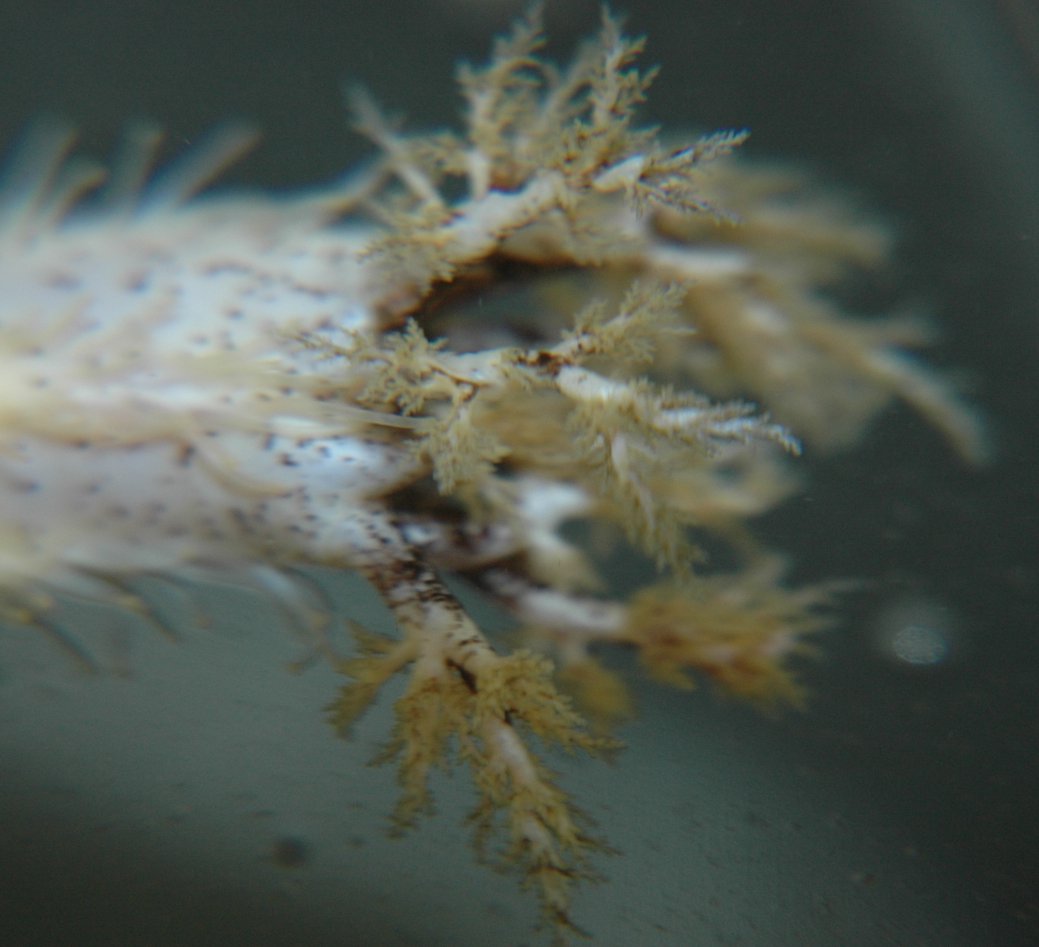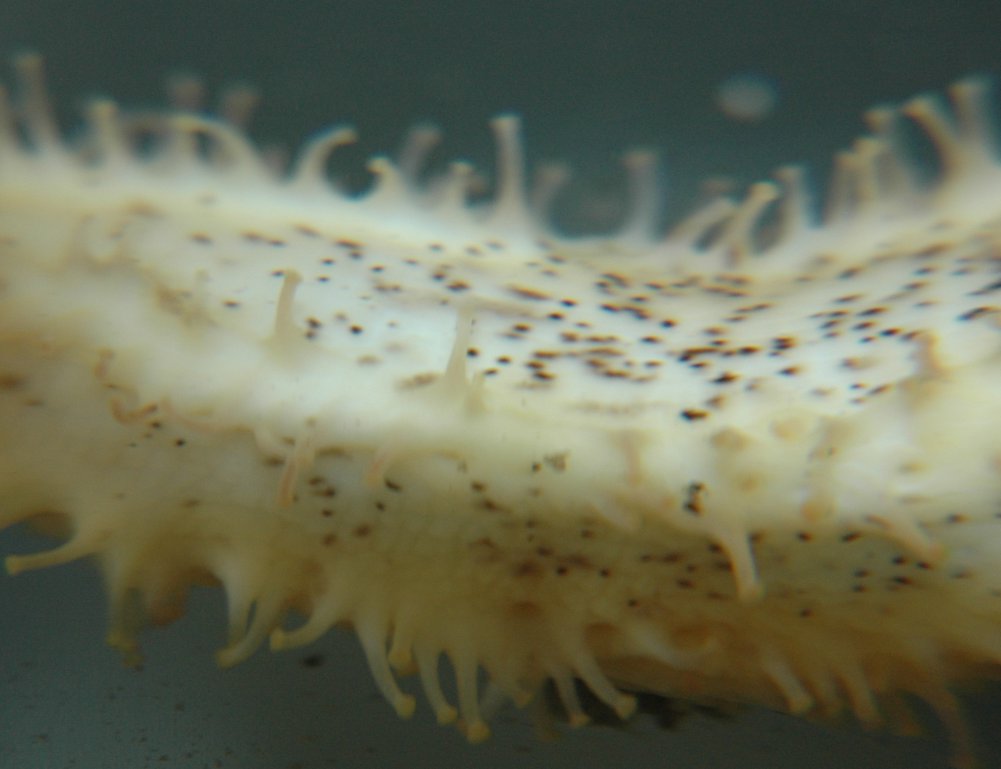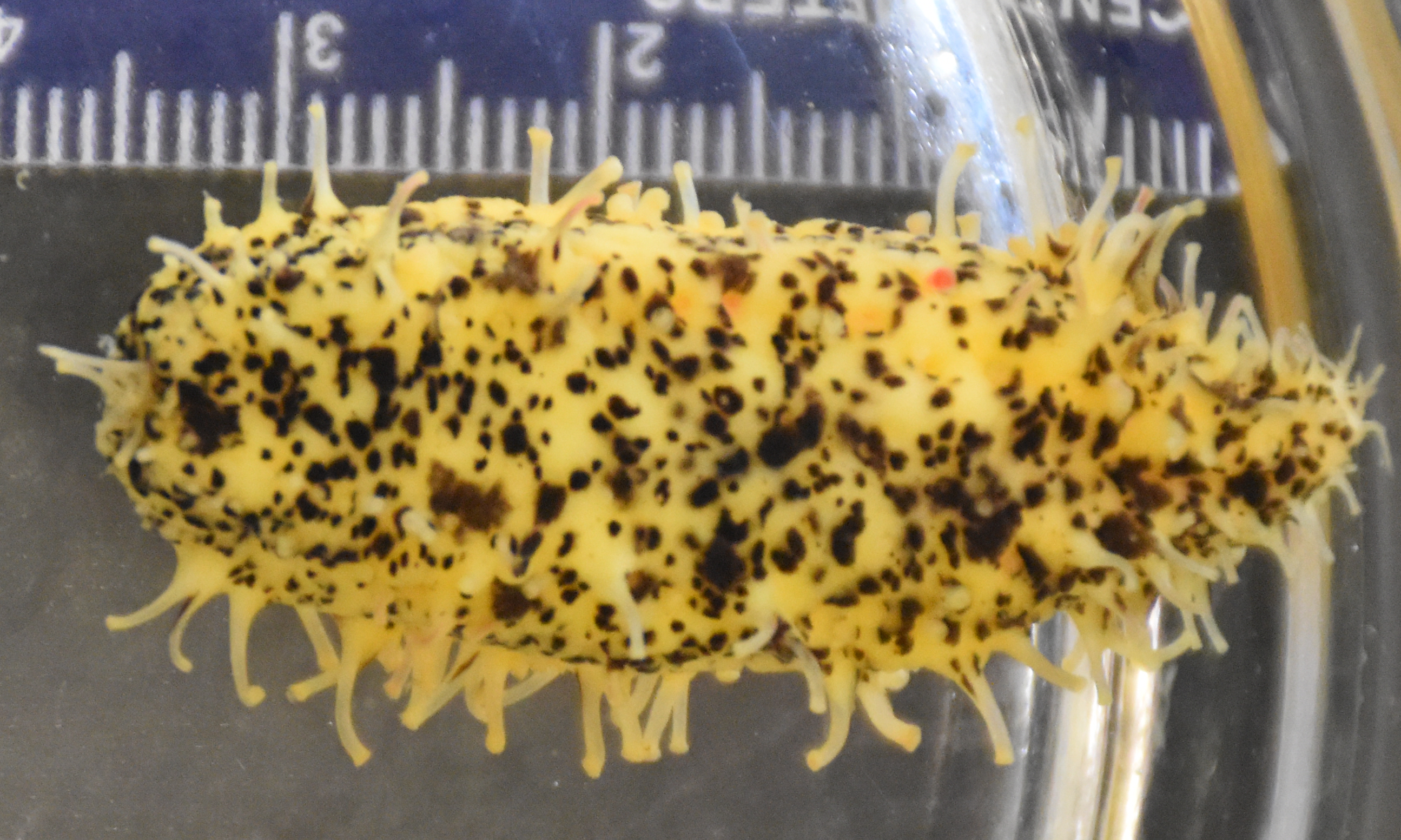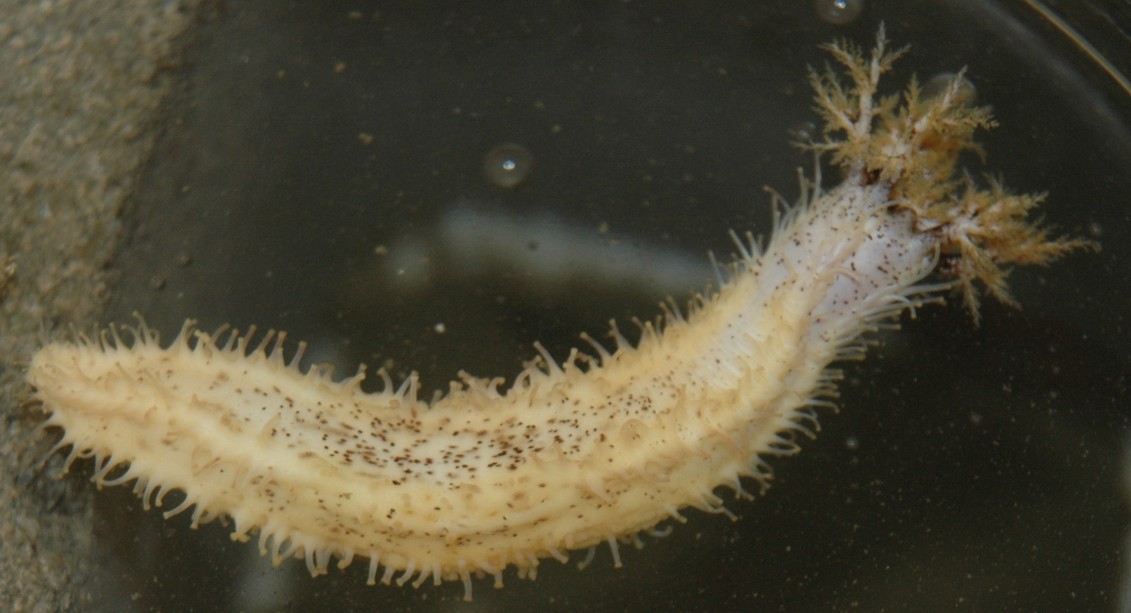How to Distinguish from Similar Species: Cucumaria miniata grows larger, is brown or orange, and is not speckled. Eupentacta species may be similar in color but are usually smaller and have no speckles.
Geographical Range: Queen Charlotte Islands, BC to Baja California (reported sightings south of Puget Sound may actually be of Pseudocnus lubricus).
Depth Range: Subtidal to 137 m
Habitat: Wedged between and under rocks and cobble
Biology/Natural History: A suspension feeder. Spawns in spring in Puget Sound. Eggs are olive-green and float when released; larvae are orange. Body wall (but not the viscera) is toxic to fish such as kelp greenling and gunnels but apparently not to seastars. May contain the pea crab Pinnixa faba.
| Return to: | |||
| Main Page | Alphabetic Index | Systematic Index | Glossary |
References:
Dichotomous Keys:Flora and Fairbanks, 1966
Kozloff 1987, 1996
Smith and Carlton, 1975
General References:
Harbo,
1999
Lambert,
1997
Morris
et al., 1980
O'Clair
and O'Clair, 1998
Ricketts
et al., 1985
Scientific Articles:
Arndt, A., C. Marquez, P. Lambert, and M.J. Smith, 1966.
Molecular
phylogeny of eastern Pacific sea cucumbers (Echinodermata:
Holothuroidea)
based on mitochondrial DNA sequence. Molecular Phylogenetics
and
Evolution 6(3): 425-437
Emlet, Richard B., 1994. Body forms and patterns of ciliation in nonfeeding larvae of echinoderms: functional solutions to swimming in the plankton? American Zoologist 34: pp. 570-585
Web sites:
General Notes and Observations: Locations, abundances, unusual behaviors:

The ten buccal tentacles are branched. Photo by Dave Cowles,
July 2005

The tube feet are in rows down the body. Photo by Dave
Cowles,
July 2005

This
small, 3.5 cm specimen found at around 100 m depth in San Juan Channel,
is more yellow than most individuals I have found in this area. The
occasional orange speckles may perhaps be from injured or missing tube
feet. The anterior end is to the left.
Photo by Dave Cowles, July 2024
Authors and Editors of Page:
Dave Cowles (2005): Created original page
